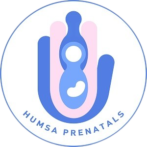
What does Humsa mean?
The Hamsa (Arabic: خمسة khamsah) depicts the open right hand, which has been used as a sign of protection in many times throughout history and in many traditions.
Judaism: Believed by Jews, to provide protection. Known as the Healing Hand of Miriam (Moses’s sister).
Christians in the Middle East: It is also known as the Healing Hand of Mary. And bringer of good fortune.
In Islam: The Hamsa is also known as the Hand of Fathima after the daughter of the Prophet Muhammad(PBUH).
In India, among Muslims, the hand symbol, is called Panjathan-e-Pak (The Pure Five), the five fingers representing Prophet Muhammad (PBUH), His daughter Hazrat Fathima(R.A.), Hazrat Ali (R.A.), Hazrat Hasain (R.A.)and Hazrat Husain (R.A.).
Hinduism: Ham-Sa denotes the Swan which is the representation of breath.
‘Hum’ being the inhalation and ‘Saa’ being the exhalation. (Sa-hum) is the first breath that a baby takes.
Indigenous traditions: The Swan as a power animal teaches acceptance with grace and connects us to inner guidance and wisdom which is very much needed in the process of childbirth.
In Buddhism, an open hand Mudra denotes “Have no fear.”
And Humsa Prenatals, aims to be a helper to the mother and her family on the journey which takes them towards the first breath of the child. Hence the name Humsa Prenatals.
The hand image in the Humsa Prenatals logo shows a mother with a child being surrounded by a loving family and community.
Bringing you strength and Gentleness,
![]() Q.M.Sami
Q.M.Sami
